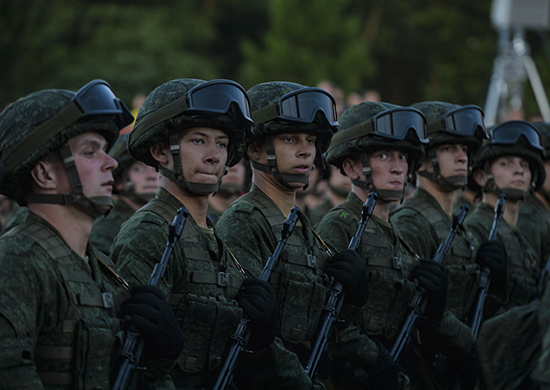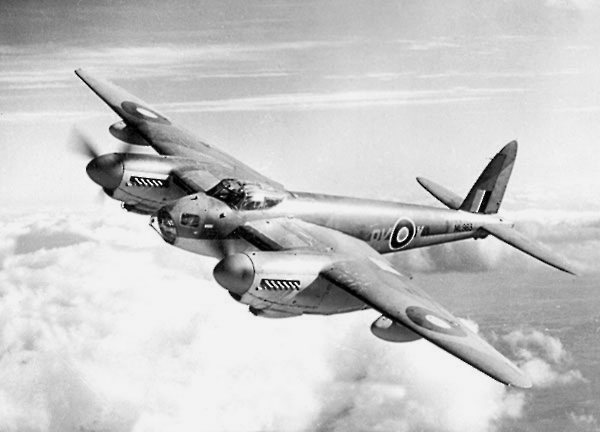|
Lothar Linke
Lothar Linke (23 October 1909 – 14 May 1943) was a German Luftwaffe night fighter pilot and recipient of the Knight's Cross of the Iron Cross during World War II. Linke claimed 27 aerial victories, 24 of them at night. On 14 May 1943 Linke and his crew were forced to bail out after engine failure of their Messerschmitt Bf 110. He struck the tail end of the plane and was killed. On 19 September 1943, he was posthumously awarded the Knight's Cross. Early life and career Linke was born on 23 October 1909 in Liegnitz, present-day Legnica, at the time in the Province of Silesia of the German Empire. He was the son of a train driver who had died in 1924. Linke attended the ''Volksschule'' (elementary school) in Liegnitz from 1916 to 1919 and the '' Oberrealschule'' ( secondary school) from 1919 to 1927, also in Liegnitz. From April 1927 to April 1928, he then attended a private school in Liegnitz. Linke joined the military service on 1 March 1934, serving with the 3. ''Eskadron'' (3r ... [...More Info...] [...Related Items...] OR: [Wikipedia] [Google] [Baidu] |
Legnica
Legnica (Polish: ; german: Liegnitz, szl, Lignica, cz, Lehnice, la, Lignitium) is a city in southwestern Poland, in the central part of Lower Silesia, on the Kaczawa River (left tributary of the Oder) and the Czarna Woda. Between 1 June 1975 and 31 December 1998 Legnica was the capital of the Legnica Voivodeship. It is currently the seat of the county and since 1992 the city has been the seat of a Diocese. As of 2021, Legnica had a population of 97,300 inhabitants. The city was first referenced in chronicles dating from the year 1004, although previous settlements could be traced back to the 7th century. The name "Legnica" was mentioned in 1149 under High Duke of Poland Bolesław IV the Curly. Legnica was most likely the seat of Bolesław and it became the residence of the high dukes that ruled the Duchy of Legnica from 1248 until 1675. Legnica is a city over which the Piast dynasty reigned the longest, for about 700 years, from the time of ruler Mieszko I of Poland af ... [...More Info...] [...Related Items...] OR: [Wikipedia] [Google] [Baidu] |
Train Driver
A train driver, engine driver, engineman or locomotive driver, commonly known as an engineer or railroad engineer in the United States and Canada, and also as a locomotive handler, locomotive operator, train operator, or motorman, is a person who drives a train, multiple unit or a locomotive. The driver is in charge of, and is responsible for the mechanical operation of the train, train speed, and all of the train handling (also known as brake handling). In American English, a hostler (also known as a switcher) moves engines around rail yards, but does not take them out on the normal tracks; the British English equivalent is a shunter. Train drivers must follow certain guidelines for driving a train safely. For instance, in general, train drivers are encouraged to favour longer stopping distances as this promotes vehicle health, safety, and passenger comfort. Career progression For many American railroads, the following career progression is typical: assistant conductor ... [...More Info...] [...Related Items...] OR: [Wikipedia] [Google] [Baidu] |
Invasion Of Poland
The invasion of Poland (1 September – 6 October 1939) was a joint attack on the Republic of Poland by Nazi Germany and the Soviet Union which marked the beginning of World War II. The German invasion began on 1 September 1939, one week after the signing of the Molotov–Ribbentrop Pact between Germany and the Soviet Union, and one day after the Supreme Soviet of the Soviet Union had approved the pact. The Soviets invaded Poland on 17 September. The campaign ended on 6 October with Germany and the Soviet Union dividing and annexing the whole of Poland under the terms of the German–Soviet Frontier Treaty. The invasion is also known in Poland as the September campaign ( pl, kampania wrześniowa) or 1939 defensive war ( pl, wojna obronna 1939 roku, links=no) and known in Germany as the Poland campaign (german: Überfall auf Polen, Polenfeldzug). German forces invaded Poland from the north, south, and west the morning after the Gleiwitz incident. Slovak military forces ... [...More Info...] [...Related Items...] OR: [Wikipedia] [Google] [Baidu] |
Military Reserve Force
A military reserve force is a military organization whose members have military and civilian occupations. They are not normally kept under arms, and their main role is to be available when their military requires additional manpower. Reserve forces are generally considered part of a permanent standing body of armed forces, and allow a nation to reduce its peacetime military expenditures and maintain a force prepared for war. In countries with a volunteer military, such as Canada, Spain, the United States and the United Kingdom, reserve forces are civilians who maintain military skills by training periodically (typically one weekend per month). They may do so as individuals or as members of standing reserve regiments—for example, the UK's Army Reserve. A militia, home guard, state guard or state military may constitute part of a military reserve force, such as the United States National Guard and the Norwegian, Swedish and Danish Home Guard. In some countries (includin ... [...More Info...] [...Related Items...] OR: [Wikipedia] [Google] [Baidu] |
Feldwebel
''Feldwebel '' (Fw or F, ) is a non-commissioned officer (NCO) rank in several countries. The rank originated in Germany, and is also used in Switzerland, Finland, Sweden, and Estonia. The rank has also been used in Russia, Austria-Hungary, occupied Serbia and Bulgaria. ''Feldwebel'' is a contraction of meaning "field" and , an archaic word meaning "usher". comes from the Old High German , meaning to go back and forth (as in "wobble"). There are variations on feldwebel, such as '' Oberstabsfeldwebel'' ("Superior Staff Field Usher"), which is the highest non-commissioned rank in the German army and air force. Feldwebel in different languages The rank is used in several countries: sv, fältväbel, russian: фельдфебель, fel'dfebel', bg, фелдфебел, feldfebel, fi, vääpeli and et, veebel. In Swiss German the spelling is used. Feldwebel in different countries and armed forces Austria ''Feldwebel'' was a typical infantry rank of the k.u.k. Austro-Hung ... [...More Info...] [...Related Items...] OR: [Wikipedia] [Google] [Baidu] |
Heavy Fighter
A heavy fighter is a historic category of fighter aircraft produced in the 1930s and 1940s, designed to carry heavier weapons, and/or operate at longer ranges than light fighter aircraft. To achieve performance, most heavy fighters were twin-engine, and many had multi-place crews; This was in contrast to light fighters, which were typically single-engine and single-crew aircraft. In Germany, they were known as ''Zerstörer'' ("destroyer"). The heavy fighter was a major design class during the pre-World War II period, conceived as long-range escort fighters or heavily-armed bomber destroyers. Most such designs failed in this mission, as they could not maneuver with the more conventional, single-engine fighters, and suffered heavy losses. Most notable among such designs was the Messerschmitt Bf 110, which suffered great losses during the Battle of Britain. An exception was the American Lockheed P-38 Lightning, which proved an effective heavy fighter; even against smaller, lighter, ... [...More Info...] [...Related Items...] OR: [Wikipedia] [Google] [Baidu] |
Olomouc
Olomouc (, , ; german: Olmütz; pl, Ołomuniec ; la, Olomucium or ''Iuliomontium'') is a city in the Czech Republic. It has about 99,000 inhabitants, and its larger urban zone has a population of about 384,000 inhabitants (2019). Located on the Morava River, the city is the ecclesiastical metropolis and was a historical capital city of Moravia, before having been sacked by the Swedish army during the Thirty Years' War. Today, it is the administrative centre of the Olomouc Region and the sixth largest city in the Czech Republic. The historic city centre is well preserved and is protected by law as urban monument reservation. The Holy Trinity Column was listed as a UNESCO World Heritage Site in 2000 for its quintessential Baroque style and symbolic value. Administrative division Olomouc is made up of 26 administrative parts: *Olomouc *Bělidla *Černovír *Chomoutov *Chválkovice *Droždín *Hejčín *Hodolany *Holice *Klášterní Hradisko *Lazce *Lošov *Nedvězí *Nemila ... [...More Info...] [...Related Items...] OR: [Wikipedia] [Google] [Baidu] |
Zerstörergeschwader 76
''Zerstörergeschwader 76'' (ZG 76) was a ''Zerstörer'' (heavy fighter; lit. "destroyer") ''geschwader'' (wing) of the German ''Luftwaffe'' during World War II. The wing operated the Messerschmitt Bf 109 in the early phases of World War II, then the Messerschmitt Bf 110 for the duration of the war. Created in 1939 based on the ''Zerstörer'' concept advocated by Hermann Göring, commander-in-chief of the Luftwaffe, the wing was only partially equipped with the Bf 110. Some units were designated ''Jagdgruppe'' 76 and flew the Messerschmitt Bf 109 during the Phoney War. Those elements (''gruppen'', or groups) that operated the Bf 110 fought in the Invasion of Poland in September 1939 which began World War II. Thereafter, ZG 76 fought in the Battle of the German Bight in December 1939 which encouraged RAF Bomber Command to switch to night bombing. In April 1940 it supported the German invasion of Denmark and fought in the Norwegian Campaign. From May to October 1940 ZG 76 served ... [...More Info...] [...Related Items...] OR: [Wikipedia] [Google] [Baidu] |
Organization Of The Luftwaffe (1933–1945)
Between 1933 and 1945, the organization of the Luftwaffe underwent several changes. Originally, the German military high command, for their air warfare forces, decided to use an organizational structure similar to the army and navy, treating the aviation branch as a strategic weapon of war. Later on, during the period of rapid rearmament, the Luftwaffe was organized more in a geographical fashion. Under the terms of the Treaty of Versailles (1919), Germany was prohibited from having an air force, with the former German Empire's ''Luftstreitkräfte'' disbandment in 1920. German pilots were secretly trained for military aviation, first in the Soviet Union during the late 1920s, and then in Germany in the early 1930s. In Germany, the training was done under the guise of the German Air Sports Association (german: Deutscher Luftsportverband (DLV)) at the Central Commercial Pilots School (german: Zentrale der Verkehrs Fliegerschule (ZVF)). Following its 15 May 1933 formation in secre ... [...More Info...] [...Related Items...] OR: [Wikipedia] [Google] [Baidu] |
Rendsburg
Rendsburg ( da, Rendsborg, also ''Rensborg'', nds, Rendsborg, also ''Rensborg'') is a town on the River Eider and the Kiel Canal in the central part of Schleswig-Holstein, Germany. It is the capital of the ''Kreis'' (district) of Rendsburg-Eckernförde. , it had a population of 28,476. History Rendsburg's foundation date is unknown though some form of fortifications was established by Bjørn Svendsen 1099–1100. Rendsburg was first mentioned in 1199. An old form of its name was Reinoldesburch. It became a part of Holstein in the 13th century, but was transferred to Schleswig in 1460. Many times the town passed from Danish to German control and vice versa. In the German-Danish War in 1864 Rendsburg was finally seized by Kingdom of Prussia and Austria. After 1866 the town was annexed by the Kingdom of Prussia. Since that time it has remained part of Germany. Although the Eider is navigable for small craft from its mouth on the North Sea to Rendsburg, the town's importance ... [...More Info...] [...Related Items...] OR: [Wikipedia] [Google] [Baidu] |
Private School
Private or privates may refer to: Music * "In Private", by Dusty Springfield from the 1990 album ''Reputation'' * Private (band), a Denmark-based band * Private (Ryōko Hirosue song), "Private" (Ryōko Hirosue song), from the 1999 album ''Private'', written and also recorded by Ringo Sheena * Private (Vera Blue song), "Private" (Vera Blue song), from the 2017 album ''Perennial'' Literature * Private (novel), ''Private'' (novel), 2010 novel by James Patterson * Private (novel series), ''Private'' (novel series), young-adult book series launched in 2006 Film and television * Private (film), ''Private'' (film), 2004 Italian film * Private (web series), ''Private'' (web series), 2009 web series based on the novel series * Privates (TV series), ''Privates'' (TV series), 2013 BBC One TV series * Private, a penguin character in ''Madagascar (franchise), Madagascar'' Other uses * Private (rank), a military rank * Privates (video game), ''Privates'' (video game), 2010 video game * Priva ... [...More Info...] [...Related Items...] OR: [Wikipedia] [Google] [Baidu] |
Secondary School
A secondary school describes an institution that provides secondary education and also usually includes the building where this takes place. Some secondary schools provide both '' lower secondary education'' (ages 11 to 14) and ''upper secondary education'' (ages 14 to 18), i.e., both levels 2 and 3 of the ISCED scale, but these can also be provided in separate schools. In the US, the secondary education system has separate middle schools and high schools. In the UK, most state schools and privately-funded schools accommodate pupils between the ages of 11–16 or 11–18; some UK private schools, i.e. public schools, admit pupils between the ages of 13 and 18. Secondary schools follow on from primary schools and prepare for vocational or tertiary education. Attendance is usually compulsory for students until age 16. The organisations, buildings, and terminology are more or less unique in each country. Levels of education In the ISCED 2011 education scale levels 2 and ... [...More Info...] [...Related Items...] OR: [Wikipedia] [Google] [Baidu] |








